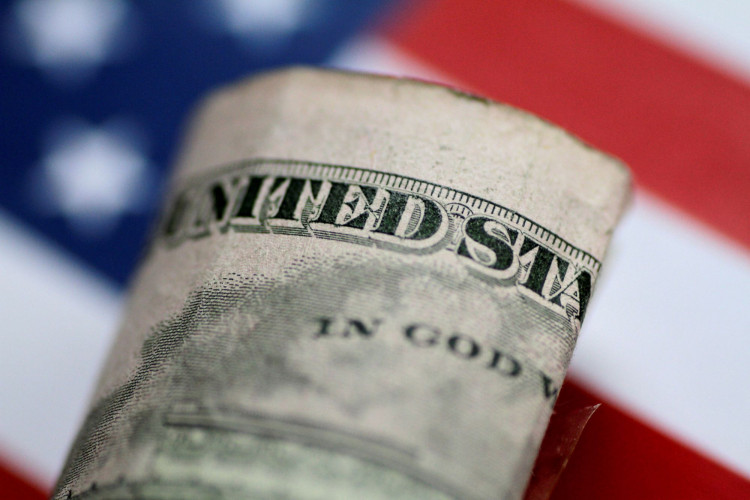U.S. Treasury yields climbed back above 4% on Monday, marking their highest levels since August, as investors reassessed their expectations for future interest rate cuts from the Federal Reserve. The move followed a stronger-than-expected U.S. jobs report, which undercut hopes for a significant reduction in rates by the central bank. The 10-year Treasury yield jumped to 4.03%, while the two-year yield surged to 4.02%, reflecting a market-wide shift in sentiment about the Fed's monetary policy trajectory.
The rally in yields came as investors digested robust September payroll data, which signaled that the U.S. economy remains resilient. This unexpected strength has led market participants to dial back their bets on the size and scope of rate cuts from the Fed in the coming months. The probability of a half-point rate cut in November has been significantly reduced, with market indicators now suggesting only an 80% chance of a more modest quarter-point reduction.
Goldman Sachs Group strategists, including George Cole, noted that the strong labor market data may have accelerated the adjustment in bond yields. "We've expected higher yields but anticipated a somewhat gradual adjustment," Cole wrote. "The extent of strength in the September jobs report may have accelerated that process, with renewed debate on the extent of policy restriction, and, in turn, the likely depth of Fed cuts."
The impact of these shifts was felt across the bond market, with open interest data showing a sharp decline in futures linked to the Secured Overnight Financing Rate (SOFR). This suggests that investors are pulling back from long positions in anticipation of a less dovish stance from the Fed. Meanwhile, a flurry of hawkish hedges in the options market indicates a broader expectation that the Fed may not be as aggressive in cutting rates as previously thought.
Citigroup economists echoed this sentiment, joining other Wall Street analysts in revising their expectations to a quarter-point rate cut in November instead of the previously anticipated half-point. This adjustment follows the robust employment figures that defied predictions of a cooling labor market.
Shorter-dated Treasury yields, closely tied to Fed policy expectations, rose faster than their longer-term counterparts, causing a temporary inversion of the yield curve-a phenomenon often seen as a signal of economic uncertainty. The two-year yields briefly surpassed those of the 10-year notes, reversing a trend toward normalization that had been gaining traction in recent weeks.
"The bond market is still adjusting to the new pricing reality," noted Alyce Andres, a U.S. rates strategist, highlighting that the path to a 50-basis-point interest rate cut in November now appears blocked. The Fed's focus seems to be shifting from aggressive inflation-fighting to ensuring broader economic stability, particularly in the labor market.
European bonds also mirrored the selloff in U.S. Treasuries. The German 10-year yield climbed to 2.25%, its highest in over a month, while the U.K. equivalent reached 4.19%. This global adjustment in bond yields underscores the broad impact of the Fed's monetary policy outlook on international markets.
As investors grapple with these developments, attention is now turning to a series of speeches from key Federal Reserve officials, including Minneapolis Fed President Neel Kashkari, Atlanta Fed President Raphael Bostic, and St. Louis Fed President Alberto Musalem. Their comments could offer further clues about the central bank's future moves.
The upcoming release of the U.S. Consumer Price Index (CPI) and Producer Price Index (PPI) later this week is also critical, as these inflation metrics will play a crucial role in shaping the Fed's decisions. Fed Chair Jerome Powell has previously indicated that future rate cuts could be gradual and spread out, depending on the economic indicators.
Meanwhile, energy markets showed renewed volatility, with U.S. crude prices rising 1.82% to $75.73 per barrel, and Brent crude increasing to $79.33 per barrel, amid concerns about potential supply disruptions from the Middle East. On Wall Street, stocks showed modest declines, with the Dow Jones, S&P 500, and Nasdaq all closing in the red as rising bond yields dampened investor sentiment.
Dario Perkins, managing director at TS Lombard, weighed in on the Fed's strategy, stating, "It doesn't need a recession to get inflation to tolerable levels, so the Fed is easing policy without waiting for genuine economic weakness. By now, everyone should have realized the Fed is cutting rates preemptively."
The dollar index remained relatively stable, hovering near its seven-week high, while the Japanese yen weakened slightly after hitting a peak last week. The market's focus remains on inflation and economic growth data as investors recalibrate their expectations for the remainder of the year.






